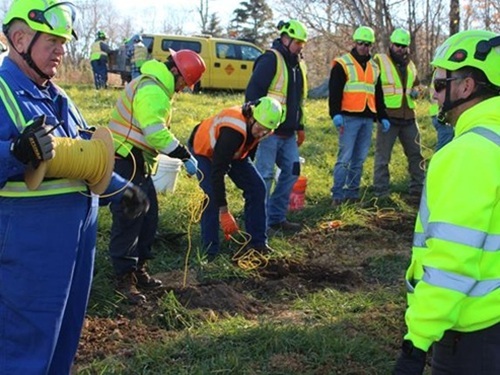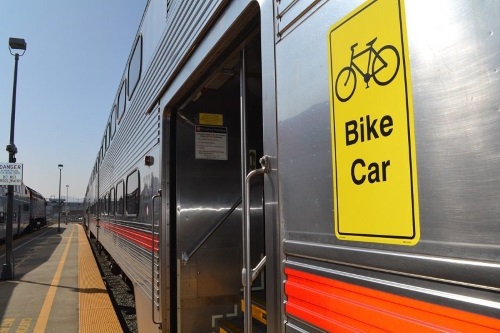Some $610 million in funding is being made available to help California communities build more housing as well as increase transit and active transportation options close to job centers and services – money augmented by the release of $279 million from a separate housing grant program.
[Above photo by Caltrain.]
“Sky-high housing costs are putting the squeeze on family budgets while long commutes contribute to dirtier air,” said Governor Gavin Newsom (D) in a statement on November 7. “By bringing housing closer to jobs, we can fight climate change and create healthier, sustainable communities across California.”

He said the California Strategic Growth Council will award use two programs – the Affordable Housing and Sustainable Communities (AHSC) program and the Transformative Climate Communities (TCC) program – to disburse $610 million generated by the state’s cap-and-trade emission program. Meanwhile, the $279 million Infill Infrastructure Grant (IIG) program will provide further financial assistance to support infrastructure improvements supporting new infill housing development.
“This funding will be a huge benefit to local jurisdictions, providing them with powerful new tools for creating climate friendly, sustainable affordable housing that is linked to transportation,” said Alexis Podesta, secretary for California’s business, consumer services, and housing agency.

“This, in turn, will give Californians new opportunities to live in homes that give them better access to jobs, schools and other services while helping in the effort to reduce greenhouse gasses,” he said.
Podesta added that those three programs – AHSC, TCC, and IIG – complement one another, and often work in combination to help ensure new housing is supported by, for example: pedestrian/bicycle/transit improvements that connect housing, jobs, schools, and services; urban greening and tree planting to cool urban heat islands, improve air quality, and enhance walkability; community gardens and urban farms to offer a healthy local food source and economic development opportunities; clean energy programs that enable residents to reduce their energy bills and greenhouse gas emission, and offer job training and placement; and education and outreach programs that help residents live healthier, more active lives.
 States
States
NCDOT Staff Participate in ‘Explosive’ Technical Training
December 19, 2025 States
States

